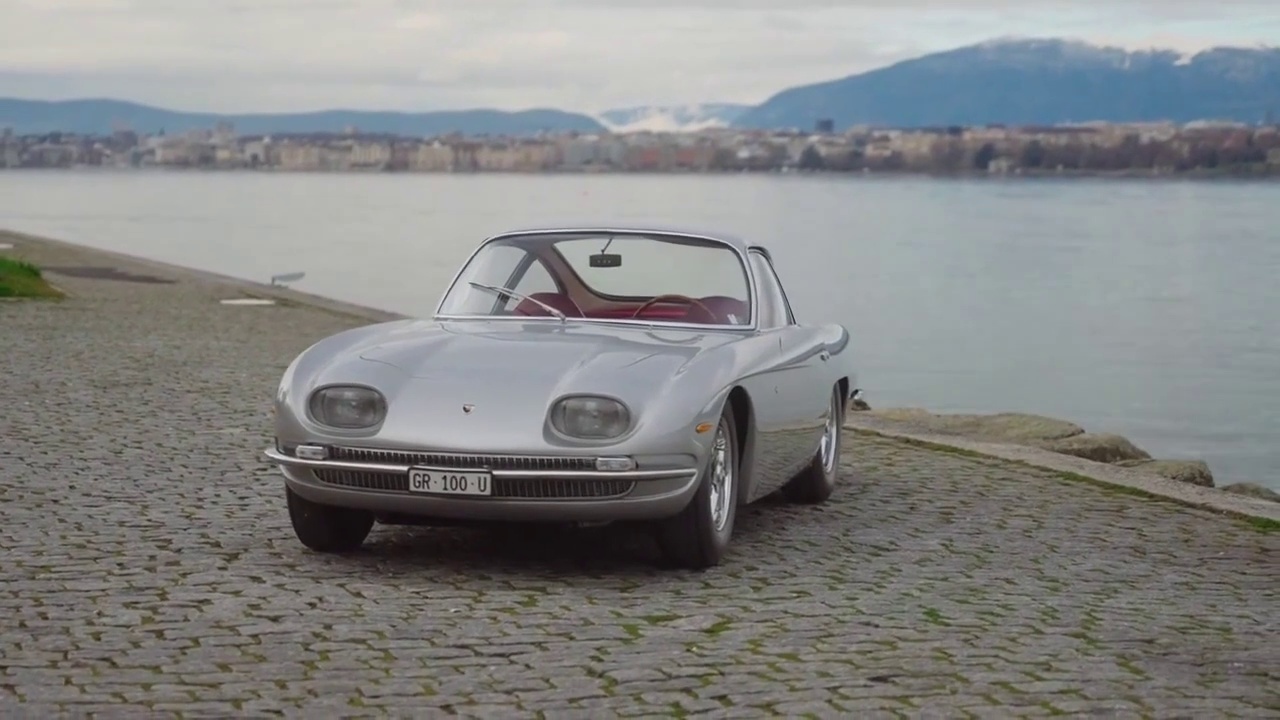
In the spring of 1964, the automotive world was introduced to a brand that would become synonymous with luxury and performance: Automobili Lamborghini. This was a company just finding its footing, having only been founded a few months before. Its debut happened in October 1963 with the unveiling of the 350 GTV, a masterpiece crafted by Franco Scaglione and assembled by Carrozzeria Sargiotto in Turin. This prototype was the foundation for what would come next – the 350 GT. This vehicle, the company’s first to go into production, made its grand entrance at the Geneva Motor Show in March 1964. Fast forward sixty years, and Lamborghini made a nostalgic return to Geneva, showcasing the 350 GT, specifically the second one ever made, to honor its inaugural production car and the legacy of the brand’s origin.
Lamborghini’s journey into the commercial sphere commenced at the 1964 Geneva Motor Show with the 350 GT’s showcase. This marked the beginning of consumers’ ability to purchase vehicles adorned with the iconic bull logo. The 350 GT was a revelation, combining speed with innovation. The framework of this automobile was courtesy of Giampaolo Dallara, a young engineer at the time who would later be recognized as a leading figure in chassis design. The engine, a 3.5-liter V12 with four overhead camshafts, was the brainchild of Giotto Bizzarrini for racing purposes. However, it was adapted for street use in the 350 GT by Paolo Stanzani, another instrumental figure in Lamborghini’s history and in the realm of GT cars globally. The sleek aluminum exterior was designed and manufactured by Carrozzeria Touring in Milan, known at the time for its unrivaled ability to produce luxury sports cars.
The 350 GT swiftly garnered attention and admiration from the media and attendees at the Geneva show, thanks to its exquisite interior that featured extensive use of leather and chrome, as well as its unique 2 + 1 seat configuration. The engineering behind the car was equally impressive, featuring four independent wheels and an engine output of 320 CV, showcasing the advanced technology of the time. The engine, in particular, was a highlight for visitors to the Lamborghini stand, where Ferruccio Lamborghini himself presented the vehicle to potential buyers and journalists. The V12 engine was soon after upgraded to 4 liters in the 400 GT, laying the foundation for Lamborghini’s enduring success.
The first 350 GT found its home with Giampiero Giusti, a drummer from Livorno enjoying peak success with his band, setting the stage for Lamborghini’s longstanding relationship with the entertainment industry. The 350 GT even made its way onto the silver screen in the 1967 film “Kill Me Quick, I’m Cold.” The model showcased at Geneva, chassis #101, met a tragic end in an accident, but the subsequent model, chassis #102, remains the oldest surviving Lamborghini, now fully restored and showcased once again in Geneva to celebrate the brand’s storied past.






















